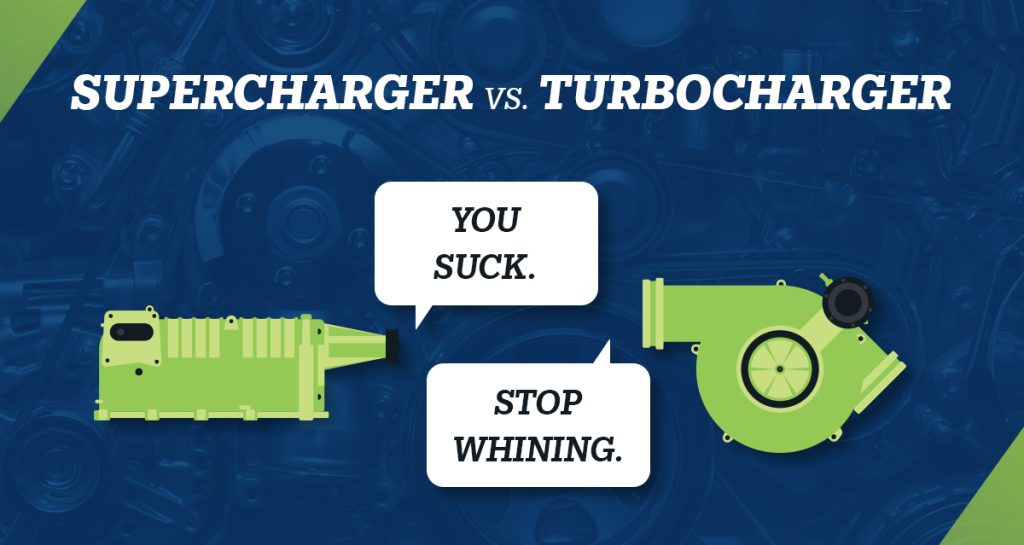Supercharger or Turbocharger? Today’s power-hungry consumers have options when it comes to choosing an induction system for their car. When it comes to the world of automotive performance, power matters. Horsepower and torque can be substantially boosted with a forced induction add-on but to choose the best route for your ride, it helps to understand the differences between the two systems and how they work.
Forced Induction 101
It might sound strange that more air forced into your engine equals more power. Isn’t it the fuel that powers the engine? Yes. But internal combustion engines rely on air (oxygen) to essentially feed the fuel, causing it to combust and burn, converting it to energy and producing power. Thus – the idea of forcing even more air into the engine to burn more fuel and ultimately generating more power is what Superchargers and Turbochargers are all about.
What are the differences between a Supercharger and a Turbocharger?
Both systems are actually air compressors designed to force additional air into the engine. But how they are constructed and how they operate are very different. Takes power to make power vs turbo lag, let’s get into it.
Supercharger – Connected by a belt that runs off the crankshaft, the supercharger spins as the engine spins and forces additional air into the engine intake. Since the Supercharger relies on the mechanical spinning of the engine, it is going to rely on the engine power to get it spinning, but once it is going, a supercharger produces a predictable amount of boost without relying on any kind of restrictions such as a boost controller. Instead, to regulate the amount of boost produced you simply change the pully on the supercharger end to have the internals spin at a faster rate, increasing the amount of air inside the engine.
Turbocharger – As the name suggests, a turbocharger has an actual turbine that uses your engine’s exhaust gases to spin, causing the compressor to force air into the engine. Basically, it uses the exhaust gasses to spin a turbine which in turn sucks in additional air resulting in additional capacity for fuel. More fuel + more air = more power.
Which One is Better?
Both provide a power boost, but Turbochargers can have a slight delay during acceleration because the power created by the exhaust gas has to build up enough to spool the turbo. They also run hot and need to be well-cooled and are a bit more complicated to install considering the intercooler and exhaust manifold. But they tend to be quieter than the Supercharger and can provide a bigger boost in power near the top of the RPM power curve.
Whatever your preference is, with constantly evolving technology, there’s never a dull moment in the world of all things automotive. If you’re more than a little passionate about what goes on under the hood, you should check out the Automotive or Diesel Technology Program at J-Tech Institute. J-Tech is keeping up with all the latest advances in the automotive industry and training the next generation of Automotive and Diesel Technicians. Contact J-Tech today to learn more about a career keeping America moving behind the wheel. Or click here to schedule a tour of our 168,000 square foot facility in Jacksonville, FL.
